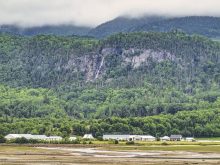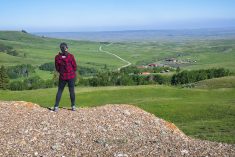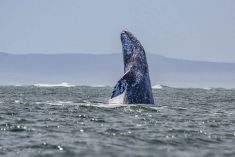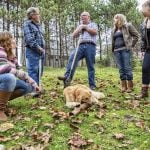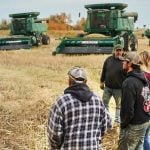If you’re impressed with bald eagles as much as we are, British Columbia’s Squamish River Valley, about an hour’s drive north of Vancouver, is the place to be.
It ranks among the top spots in the world to see eagles up close and in great numbers, with the best viewing sites just steps away from a parking area.
Early winter is the prime time to catch this phenomenon as the eagles gather to feast on salmon. The timing varies from year to year, but eagles may be around from mid-November to mid-February, with December and early January often reaching peak numbers.
Read Also

Restaurant blends zero waste, ancient farming
A Mexico City restaurant has become a draw for its zero-waste kitchen, which means that every scrap of food and leftovers is reused for other purposes.
Salmon spawning occurs between November and February. They swim up Howe Sound, site of the city of Squamish, then head upstream on the Squamish River and into other rivers such as the nearby Cheakamus. Dead salmon litter the rocky shoreline like a buffet, providing easy pickings for hungry eagles.
While we might find eagles at different places in and around Squamish, the top spot is in the community of Brackendale on the northern end of Squamish. The welcome sign at the entrance to Brackendale bills it as World Eagle Capital.
The Eagle Run dike along the east bank of the Squamish River offers easy viewing over the eagles’ favourite places to hang out. Brackendale Eagles Provincial Park is across the river, which protects the eagle habitat and is closed to the public in winter. It’s a beautiful setting with river channels and curves against a backdrop of snow-capped mountains. Eagles might be anywhere — roosting in tall trees near the far shore, sitting on stumps, flying by, or feeding along the shoreline.
The dike has a viewing shelter with picnic tables and interpretive displays on the eagles and the life cycle of the salmon. A few park benches line the riverbank as well.
The eagles are monitored by the volunteer organization Eagle Watch. Members come twice a day to count eagles and other wildlife, then frequently post the tally on the Squamish Environment Society website. In the 36 years that they have been counting eagles, the annual average has been about 1,300. The biggest count was 3,769 in 1994, setting a world record.
The Eagle Watch folks are a great source of information, often chatting with visitors and answering questions. One day, a volunteer told us that he found about 100 eagles on the morning count. Across the river, we could see the trees dotted with eagles, with five in one tree alone.
Later we spoke with volunteer Judith Knapp, who is involved with education programs. She explained how weather events are affecting eagle numbers here. Last winter’s flood waters washed out large areas in the riverbed and took out many trees, changing the landscape dramatically. And hot summer weather resulted in low water levels that can greatly affect spawning channels and the eagles’ food source.
Bald eagles have a reputation for harassing other birds and stealing their food, and also stealing from each other. Often a lone eagle would be happily chowing down on a piece of salmon only to have one or more swoop in, leading to inevitable squabbles.
It wasn’t unusual for eagles to fly right over us and land on trees at the edge of the dike. These great birds look even more imposing close-up. They stand around a metre high and have wingspans close to two metres. Juveniles are mottled-looking, often appearing larger than their parents due to their fluffed-up downy feathers. They don’t get that trademark white head and white tail feathers until maturity at four to five years.
While the eagles steal the show, other wildlife frequents this stretch of river. We saw buffleheads and goldeneye ducks, mergansers, and gulls galore. Almost every day we saw harbour seals bobbing around looking for food.
The most unusual encounter was a great blue heron wandering among the eagles on the shoreline. If the heron got too close, an eagle would squawk at it in warning, though the heron didn’t seem intimidated.
Climate change is affecting this eagle gathering. Part of the reason that they come here in great numbers is that the lower reaches of the Squamish River stay open year-round while rivers farther north freeze over. As the warming climate leaves more rivers ice-free later into winter, the eagles may not have to travel as far to find fish. But in the meantime, this remains one of Canada’s great wildlife spectacles.
Arlene and Robin Karpan are well-travelled writers based in Saskatoon. Contact: travel@producer.com.






